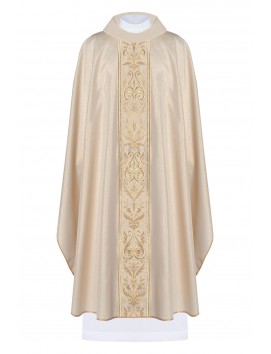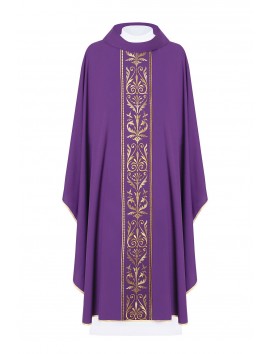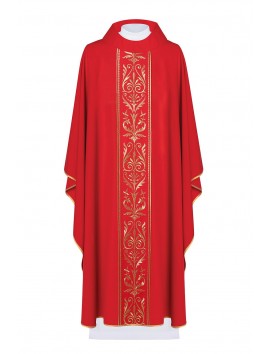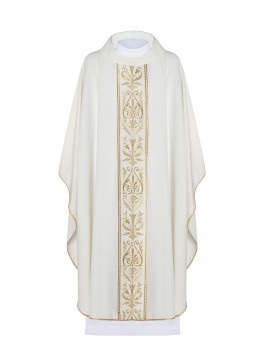Priests wear a surplice for a variety of reasons, primarily during liturgical services such as Mass. The surplice is a liturgical vestment worn over other garments, such as the cassock, and is usually made of lightweight cotton or linen. It is a symbol of purity and holiness and represents the baptismal garment that all Christians receive when they are baptized. Here are some reasons why priests wear a surplice:
1. Liturgical function: During Mass, the priest wears a surplice over his cassock as part of his liturgical vestments. The surplice is a symbol of the priest's purity and holiness and is believed to help him focus his attention on the sacredness of the liturgy.
2. Historical significance: The surplice has a long history in the Christian Church and was worn by priests as early as the 5th century. It has become a traditional garment worn by priests and other members of the clergy during liturgical services.
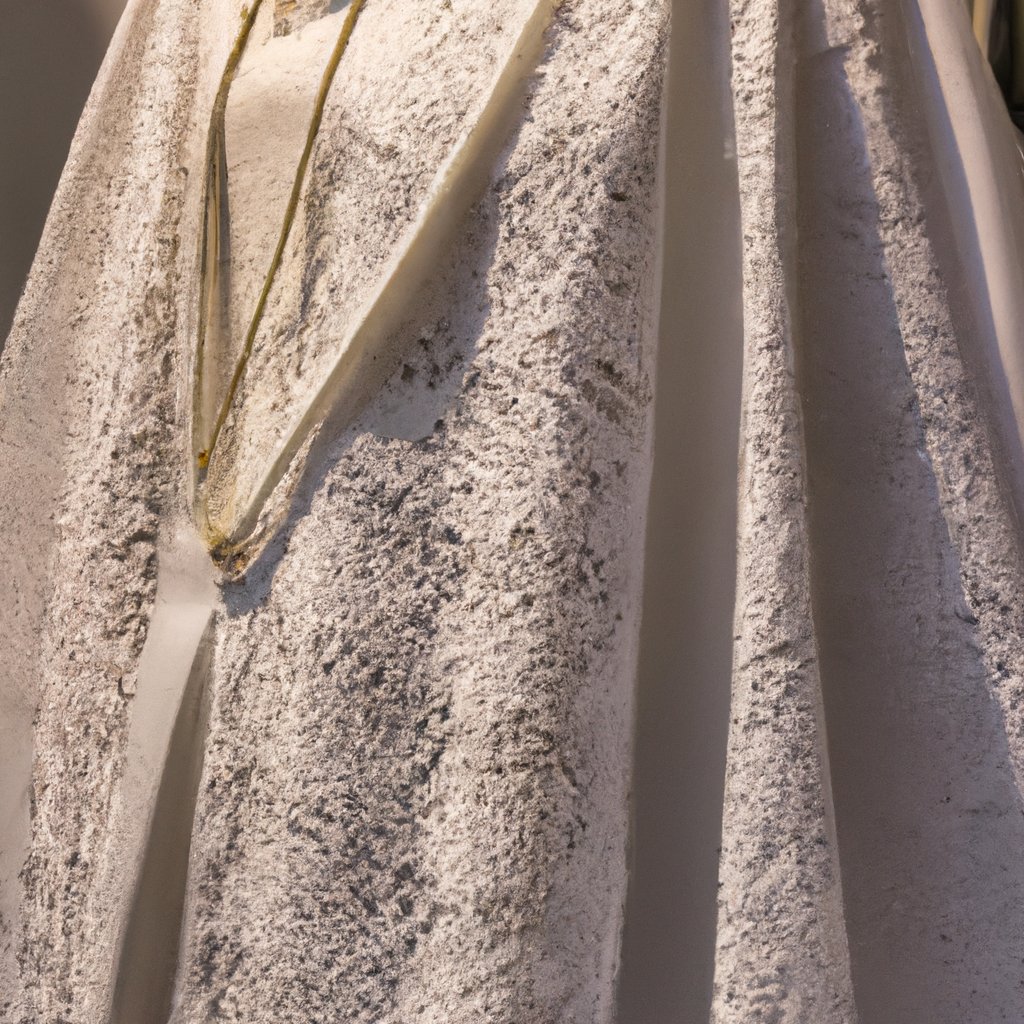
Can you wear a surplice without a cassock?
In general, a surplice is designed to be worn over a cassock or other liturgical vestment, but it may be worn alone in certain circumstances. For example, a lay reader or acolyte may wear a surplice without a cassock during worship. This is because the surplice is primarily a symbol of purity and holiness, and it is not necessarily required to be worn with a cassock. However, it may not be appropriate for a priest or other member of the clergy to wear a surplice alone, without a cassock or other vestments because this is not the traditional way of wearing the surplice during liturgical services. Ultimately, whether it is acceptable to wear a surplice without a cassock depends on the specific traditions and practices of the particular church or denomination.
What is the Episcopal vestment?
Episcopal's vestments are a set of liturgical garments worn by bishops, priests, and deacons in the Episcopal Church during worship services. The vestments typically include a cassock, surplice, stole, chasuble, and cope, among other items. Here is a brief description of each of these vestments:
1. Cassock - A long, black garment worn by clergy as an undergarment. It is often worn with a white clerical collar.
2. Surplice - A white, flowing garment worn over the cassock during services. It is often made of light cotton or linen.
3. Stole - A long, narrow, scarf-like garment worn over the shoulders with the ends hanging down in front. It is often decorated with symbols or colors appropriate to the liturgical season.
4. Chasuble - A sleeveless outer garment worn over the stole during the celebration of Holy Communion. It is often made of richly decorated silk or velvet.
What is the difference between surplice and rochet?
A surplice and a rochet are both liturgical vestments worn by clergy of various Christian denominations, but there are some differences between the two.
A surplice is a white, flowing garment with wide sleeves, often made of lightweight cotton or linen, usually worn over a cassock. It is worn by clergy of various ranks during various liturgical services, such as baptisms, weddings, and funerals. The surplice is often decorated with lace, embroidery, or other ornamental details.
A rochet, on the other hand, is a white, knee-length vestment typically worn by bishops and some other high-ranking clergy. It is made of fine linen or cotton and has narrow, close-fitting sleeves. The rochet is often worn over a cassock and is sometimes worn with a chimere, a sleeveless outer garment that covers the shoulders and upper body.
What is worn under a surplice?
Under a surplice, a cleric typically wears a cassock. A cassock is a long, black garment that fits close to the body and extends down to the feet. It is worn by clerics as an undergarment and is usually made of lightweight wool or cotton. The cassock is often worn with a white clerical collar and is considered a symbol of the wearer's vocation as a member of the clergy. In some cases, a surplice may be worn over a stole, which is a long, narrow scarf-like garment worn over the shoulders, often decorated with symbols or colors appropriate to the liturgical season.
Who can wear a cassock and surplice?
Cassocks and surplices are liturgical vestments typically worn by members of the clergy of various Christian denominations. The cassock is a long, black garment that fits tightly to the body and is worn as an undergarment by members of the clergy, while the surplice is a white, flowing garment with wide sleeves that is worn over the cassock during various liturgical services. In general, the cassock and surplice are worn by priests, deacons, and other ordained members of the clergy. In some cases, however, lay persons participating in liturgical services may also wear a surplice over their regular clothing as a symbol of their participation in the service. The specific rules and customs regarding the wearing of cassocks and surplices may vary by Christian denomination and by individual church or parish.
Who can wear a surplice?
In general, the surplice is a liturgical vestment worn by members of the clergy of various Christian denominations. It is typically worn over a cassock during various liturgical services. The specific rules and customs regarding the wearing of surplices may vary depending on the Christian denomination and the individual church or parish. In some denominations, only ordained clergy, such as priests, deacons, or bishops, may wear a surplice during worship. In other denominations, lay people participating in liturgical services may also wear a surplice over their regular clothing as a symbol of their participation in the service. Ultimately, the decision about who may wear a surplice is guided by the traditions and practices of the particular Christian denomination and the local church or congregation.
Why wear a surplice?
The surplice is a liturgical vestment worn by members of the clergy of various Christian denominations for centuries. It is typically worn over a cassock during various liturgical services such as Mass, Evening Prayer, and other religious ceremonies. There are several reasons for wearing the surplice:
1. Symbolism: The surplice is a symbol of purity, righteousness, and holiness. It is a visual representation of the spiritual purity and devotion of the cleric who wears it.
2. Tradition: The surplice has been worn by clergy for centuries and is an important part of the liturgical tradition of many Christian denominations.
3. Identification: The surplice helps identify the clergy members who are leading the service or ceremony. This is especially important in larger churches or at large events, where it may be difficult to distinguish the clergy from the rest of the congregation.
4. Practicality: The surplice is designed to be comfortable and easy to wear.

